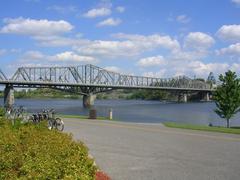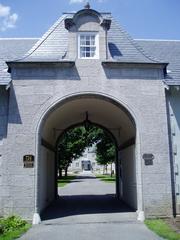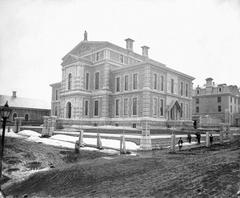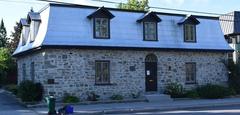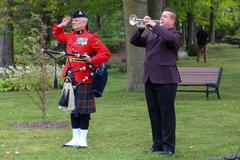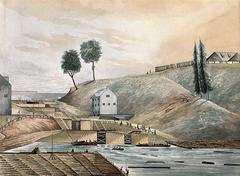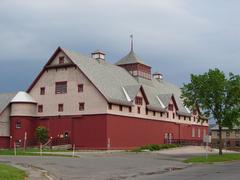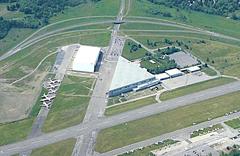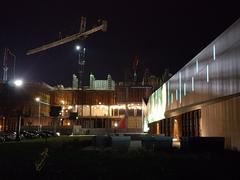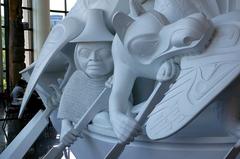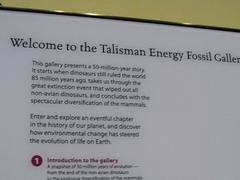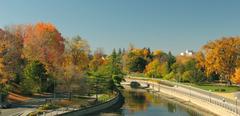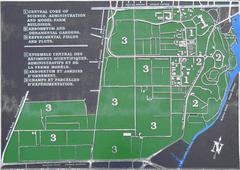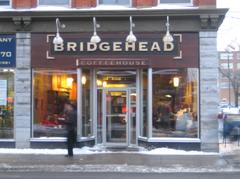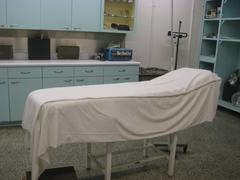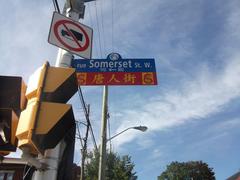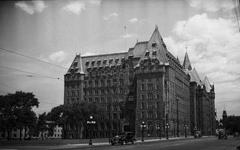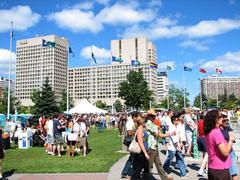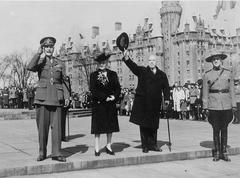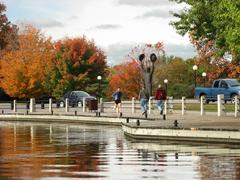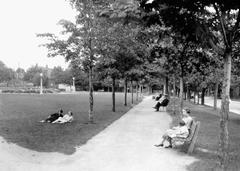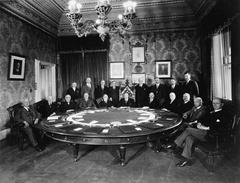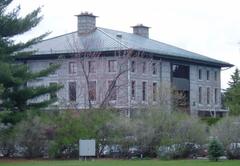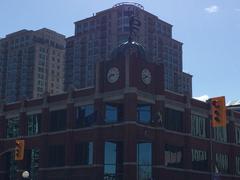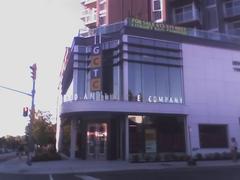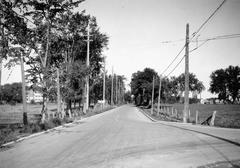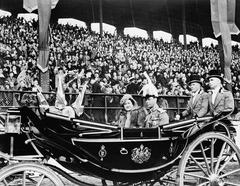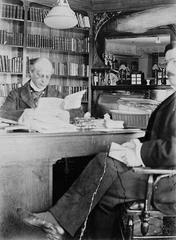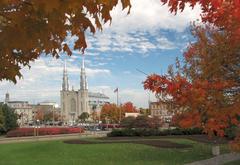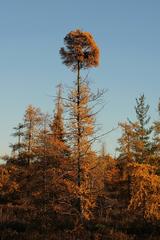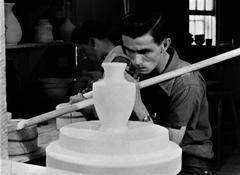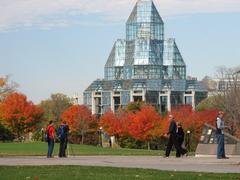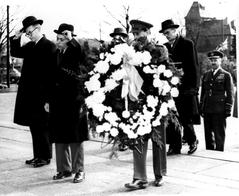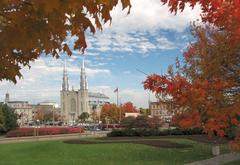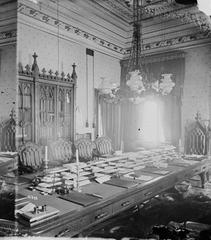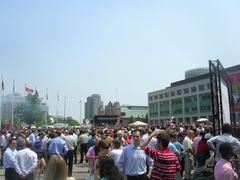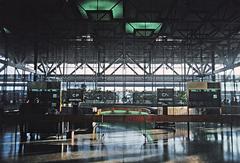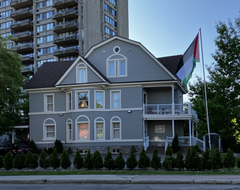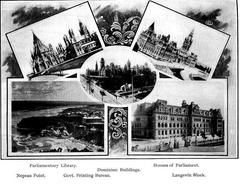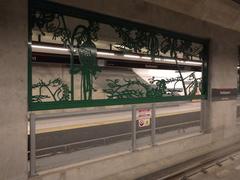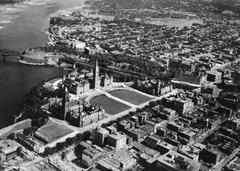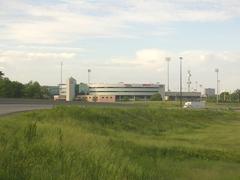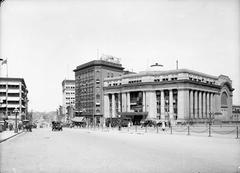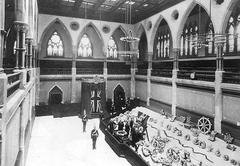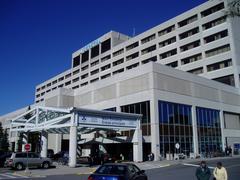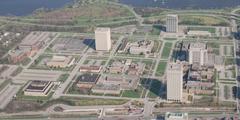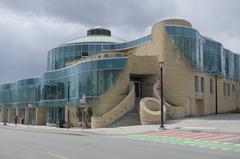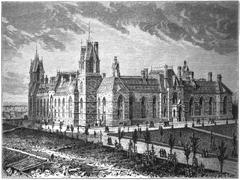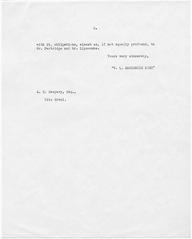Comprehensive Guide to Visiting Billings Estate National Historic Site, Ottawa, Canada
Publication Date: 25/07/2024
Introduction
The Billings Estate National Historic Site in Ottawa, Ontario, stands as a monumental testament to early Canadian settlement and the enduring legacy of the Billings family. Established in 1812 and officially designated as a National Historic Site of Canada in 1968, this estate offers visitors a unique opportunity to explore over two centuries of history (Parks Canada). From its beginnings as the home of Braddish Billings, Ottawa’s first settler, the estate has evolved into a museum that encapsulates the architectural, agricultural, and cultural developments of the region (Ottawa Museum Network). This guide aims to provide a comprehensive overview of the Billings Estate, detailing its historical significance, visitor information, and tips for making the most out of your visit. Whether you’re a history enthusiast, architecture aficionado, or simply looking for a picturesque spot to spend a day, the Billings Estate offers something for everyone.
Table of Contents
- [Historical Background](#historical-backgroundhistorical-background)
- [Early Settlement and Construction](#early-settlement-and-constructionearly-settlement-and-construction)
- [Architectural Evolution](#architectural-evolutionarchitectural-evolution)
- [Agricultural Prosperity](#agricultural-prosperityagricultural-prosperity)
- [Generational Legacy](#generational-legacygenerational-legacy)
- [Transition to a Museum](#transition-to-a-museumtransition-to-a-museum)
- [National Historic Site Designation](#national-historic-site-designationnational-historic-site-designation)
- [Key Architectural Features](#key-architectural-featureskey-architectural-features)
- [Visitor Information](#visitor-informationvisitor-information)
- [Visiting Hours and Tickets](#visiting-hours-and-ticketsvisiting-hours-and-tickets)
- [Guided Tours and Special Events](#guided-tours-and-special-eventsguided-tours-and-special-events)
- [Accessibility](#accessibilityaccessibility)
- [Travel Tips and Nearby Attractions](#travel-tips-and-nearby-attractionstravel-tips-and-nearby-attractions)
- [Preservation and Public Engagement](#preservation-and-public-engagementpreservation-and-public-engagement)
- [Frequently Asked Questions](#frequently-asked-questionsfrequently-asked-questions)
- [Conclusion](#conclusionconclusion)
Historical Background
Early Settlement and Construction
The Billings Estate National Historic Site is a significant heritage museum that offers a glimpse into the early settlement history of the region. The estate’s origins date back to 1812 when Braddish Billings, a Massachusetts-born settler, moved to the area and became the first settler of Gloucester Township. Billings, born in 1783, initially engaged in the timber trade, which was a burgeoning industry at the time (Wikipedia).
The construction of the Billings House, also known as Park Hill, began in 1827 and was completed by 1829. This house is recognized as the oldest wood-framed house in Ottawa and is a fine example of New England Georgian architecture. The house’s design features symmetry and classical details, including a front-sloped pitched roof with end chimneys, a central block with matching five-bay north and south façades, and an open porch with pillars supporting a balcony (Parks Canada).
Architectural Evolution
The Billings House underwent several modifications over the years, reflecting the evolving architectural tastes and needs of its inhabitants. In 1831, the north wing, which may have been moved intact from an earlier Billings home, was added. Subsequent changes included the removal of a two-storey verandah and the addition of dormers and a roof monitor. These modifications resulted in a central pavilion with wings, maintaining the house’s classical aesthetic while accommodating the growing Billings family (Parks Canada).
Agricultural Prosperity
After establishing himself in the timber trade, Braddish Billings transitioned to agriculture, turning the estate into a prosperous farm. The farm provided produce for Bytown (now Ottawa) and was linked to the town by the Bytown and Prescott Railway. This agricultural success contributed to the estate’s prominence in the region and solidified the Billings family’s status as influential settlers (Wikipedia).
Generational Legacy
The Billings Estate remained in the family for four generations, serving as a home and a symbol of the family’s enduring legacy in the Ottawa region. Over time, portions of the property were sold off to developers, but the core of the estate, including the historic house and a small plot of land, was preserved. The estate also includes a historic cemetery with graves dating back to 1820, further emphasizing its long-standing historical significance (Wikipedia).
Transition to a Museum
In 1975, the Billings Estate was transformed into a museum, now operated by the City of Ottawa. This transition marked a new chapter in the estate’s history, allowing the public to explore and appreciate its rich heritage. The museum’s collection includes over 13,000 artifacts, although only a small portion is on display at any given time. The Billings Estate Artifact Collection is housed at the Routhier Community Centre and is accessible during special events like Doors Open Ottawa, held annually in early June (Wikipedia).
National Historic Site Designation
The Billings House was designated a National Historic Site of Canada in 1968, recognizing its historical and architectural significance. The designation highlights the house’s role as one of Ottawa’s oldest homes and its association with Braddish Billings, the first settler of Gloucester Township. The heritage value of the site is further underscored by its classical design elements, timber-frame construction, and the evidence of its evolutionary nature through various architectural modifications (Parks Canada).
Key Architectural Features
Several key elements contribute to the heritage value of the Billings Estate. These include its siting on a hill overlooking the Rideau River, its landscaped property, and its classically inspired design. Notable architectural features include the rectangular massing, front-sloped pitched roof with end chimneys, symmetrical organization of the central block, and the open porch with pillars supporting a balcony. The house’s timber-frame construction, wood cladding, and detailing, such as returned eaves, dentilled cornice, and window headers, further enhance its historical significance (Parks Canada).
Visitor Information
Visiting Hours and Tickets
The Billings Estate National Historic Site is open to visitors from May to October. The typical visiting hours are from 10 AM to 5 PM, Wednesday through Sunday. Admission fees are as follows:
- Adults: $6
- Seniors (65+): $5
- Students: $4
- Youth (6-17): $3
- Children (5 and under): Free
- Family (2 adults and 3 children): $15
For the most current information on visiting hours and ticket prices, please visit the official website.
Guided Tours and Special Events
Guided tours are available and provide a deeper insight into the estate’s history and architecture. Special events, including historical reenactments, themed tours, and educational workshops, are held throughout the year. Check the official website for the event calendar and tour schedules.
Accessibility
The Billings Estate strives to be accessible to all visitors. The museum and grounds are wheelchair accessible, and there are designated parking spots for visitors with disabilities. If you have specific accessibility needs, it is recommended to contact the museum in advance.
Travel Tips and Nearby Attractions
When planning your visit, consider exploring other nearby attractions such as the Rideau Canal, the Canadian Museum of Nature, and Lansdowne Park. The estate is conveniently located and accessible by public transit, car, or bike. Ample parking is available on-site.
Preservation and Public Engagement
The preservation of the Billings Estate is a testament to efforts to maintain and celebrate Ottawa’s historical heritage. The estate’s inclusion in Doors Open Ottawa allows the public to explore its architectural and historical significance. This annual event provides an opportunity for visitors to engage with the estate’s rich history and appreciate the efforts made to preserve it for future generations (Wikipedia).
Frequently Asked Questions
What are the Billings Estate visiting hours?
The museum is open from May to October, Wednesday through Sunday, from 10 AM to 5 PM.
How much are the Billings Estate tickets?
Admission fees are $6 for adults, $5 for seniors, $4 for students, $3 for youth, and free for children under 5. A family pass is available for $15.
Are guided tours available?
Yes, guided tours are available and offer deeper insights into the estate’s history and architecture.
Is Billings Estate accessible?
Yes, the museum and grounds are wheelchair accessible, and there are designated parking spots for visitors with disabilities.
Conclusion
The Billings Estate National Historic Site offers a comprehensive look into the early settlement and development of Ottawa. Its historical background, architectural evolution, and transition to a museum highlight the enduring legacy of the Billings family and their contributions to the region’s heritage. Plan your visit today to explore its rich history, appreciate its architectural features, and engage with the preserved artifacts that tell the story of one of Ottawa’s earliest and most influential families. For more information and updates, visit the official website and follow the museum on social media.

